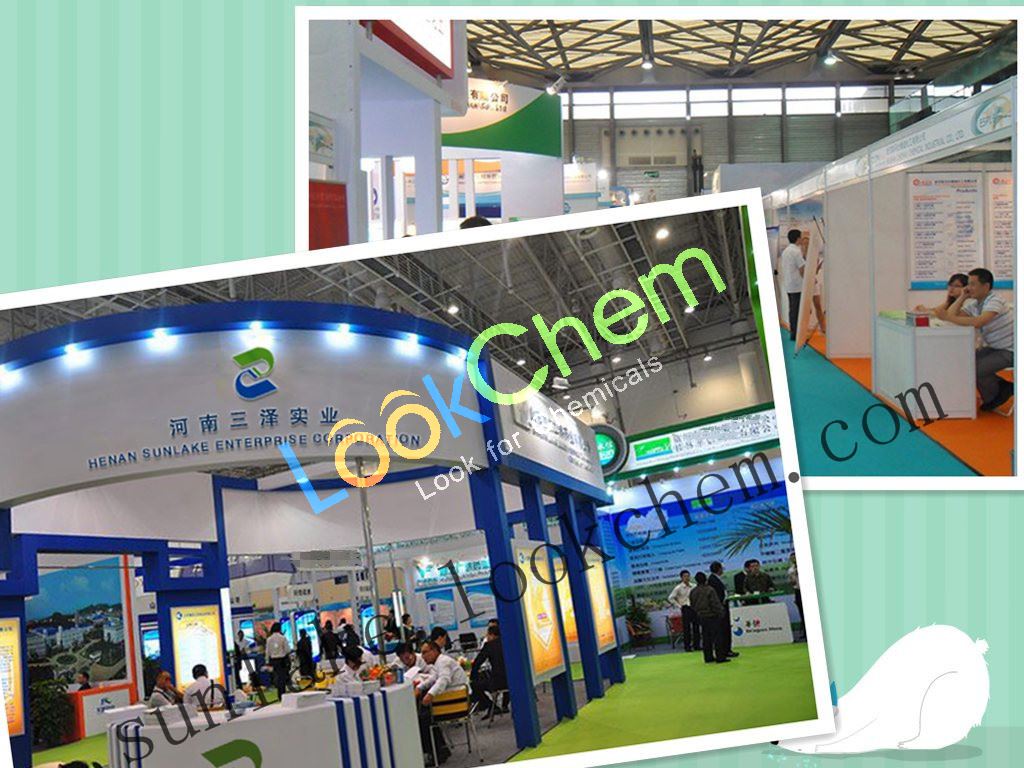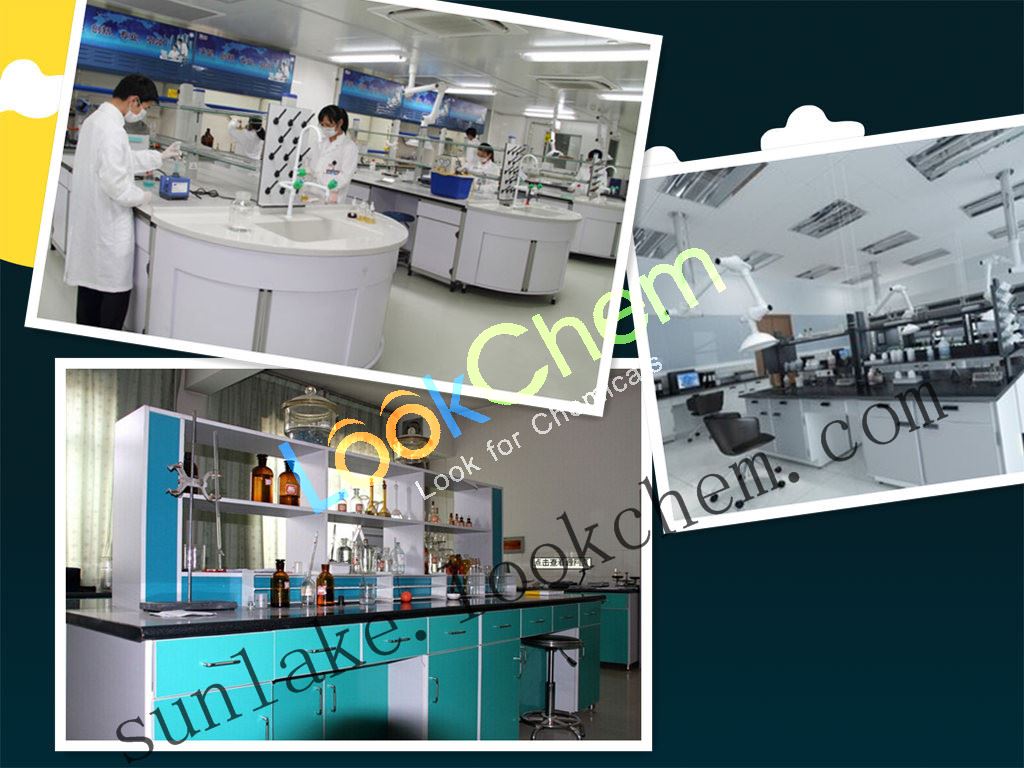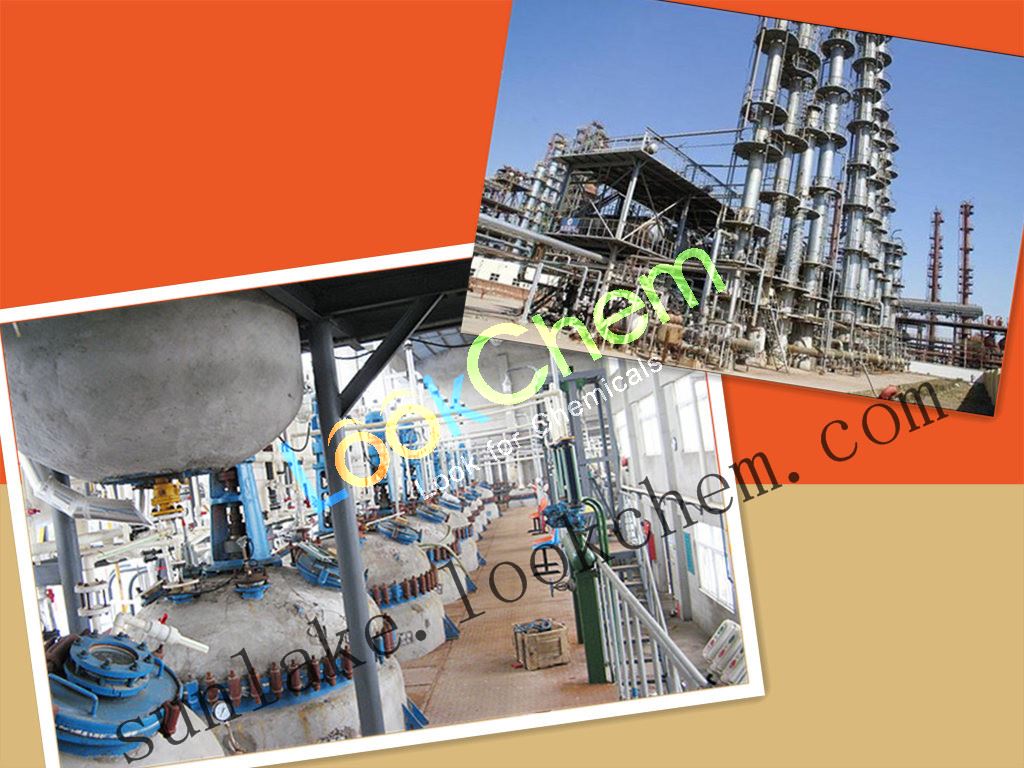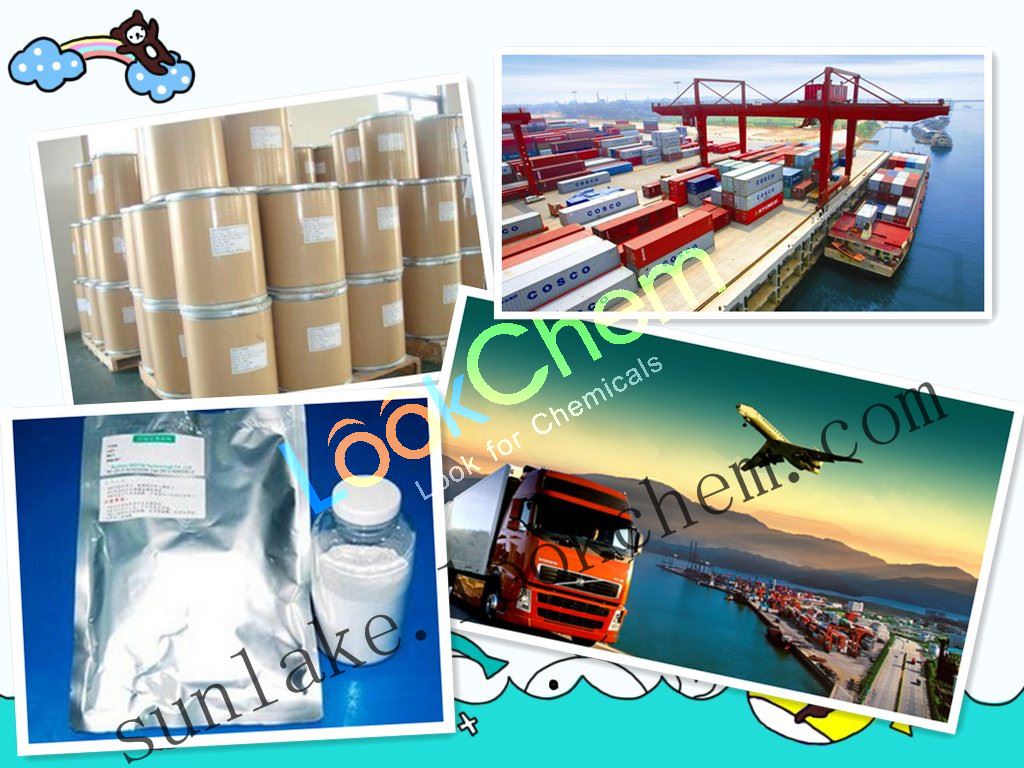HENAN SUNLAKE ENTERPRISE CORPORATION
- Country:
 China (Mainland)
China (Mainland) - Year Established: 2010
- Business type: Trading Company
- Contact Details | Similar Products


You May Like:
-
lower price High quality S-2 CAS No.: 1010396-29-8
USD $1.00-1.00 / Kilogram
-
lower price High quality Mel CAS No.: 121062-08-6
USD $1.00-1.00 / Kilogram
-
lower price High quality tre CAS No.: 6157-87-5
USD $1.00-1.00 / Kilogram
-
lower price High quality Tam CAS No.: 54965-24-1
USD $1.00-1.00 / Kilogram
-
DexmedetomidineHcl CAS No.: 113775-47-6
USD $10.00-100.00 / Kilogram
-
lower price High quality MOT CAS No.: 1627580-64-6
USD $1.00-1.00 / Kilogram
-
Nafamostat mesylate CAS No.: 82956-11-4
USD $10.00-100.00 / Kilogram
-
lower price High quality yk1 CAS No.: 1370003-76-1
USD $1.00-1.00 / Kilogram
-
lower price High quality DSI CAS No.: 62568-57-4
USD $1.00-1.00 / Kilogram
CAS NO:57-11-4 Stearic acid CAS NO.57-11-4
- Min.Order Quantity:
- 1 Kilogram
- Purity:
- 98%
- Port:
- China Main Port
- Payment Terms:
- L/C,D/A,D/P,T/T,MoneyGram,Other
Keywords
- Stearic acid
- 57-11-4
- C18H36O2
Quick Details
- ProName: CAS NO:57-11-4 Stearic acid
- CasNo: 57-11-4
- Molecular Formula: C18H36O2
- Appearance: white flakes
- Application: 57-11-4
- DeliveryTime: Within 3-7days
- PackAge: As requested
- Port: China Main Port
- ProductionCapacity: 300 Kilogram/Day
- Purity: 98%
- Storage: 2-8°C
- Transportation: By air or by sea
- LimitNum: 1 Kilogram
Superiority
| stearic acid basic information |
| product name: | stearic acid |
| synonyms: | cetylacetic acid;fema 3035;carboxylic acid c18;c18;c18:0 fatty acid;acidum stearicum 50;n-octadecylic acid;n-octadecanoic acid |
| cas: | 57-11-4 |
| mf: | c18h36o2 |
| mw: | 284.48 |
| einecs: | 266-928-5 |
| product categories: | miscellaneous natural products;alkylcarboxylic acids;biochemistry;higher fatty acids & higher alcohols;monofunctional & alpha,omega-bifunctional alkanes;monofunctional alkanes;saturated higher fatty acids;chemical intermediate;plasticizer, stabilizer and lubricant;food additives |
| mol file: | 57-11-4.mol |
|
|
|
| stearic acid chemical properties |
| mp | 67-72 °c(lit.) |
| bp | 361 °c(lit.) |
| density | 0.84 |
| vapor pressure | 1 mm hg ( 173.7 °c) |
| fema | 3035 |
| refractive index | 1.4299 |
| fp | >230 °f |
| storage temp. | 2-8°c |
| form | powder |
| water solubility | 0.1-1 g/100 ml at 23 ºc |
| merck | 14,8804 |
| brn | 608585 |
| cas database reference | 57-11-4(cas database reference) |
| nist chemistry reference | octadecanoic acid(57-11-4) |
| safety information |
| hazard codes | xi,f |
| risk statements | 38-36/37/38-11 |
| safety statements | 37/39-26-16 |
| wgk germany | 3 |
| rtecs | wi2800000 |
| hs code | 38231100 |
| hazardous substances data | 57-11-4(hazardous substances data) |
| stearic acid usage and synthesis |
| fatty acid |
stearic acid is one of several major long-chain fatty acids comprising oils and fats. it is presented in animal fats, oil and some kinds of vegetable oils as wellin the form of glycerides. these oils, after hydrolysis, produce the stearic acid. stearic acid is a fatty acid widely existing in nature and has the general chemical properties of carboxylic acids. almost all kinds of fat and oil contain certain amount of stearic acid with the content in the animal fats being relative high. for example, the content in the butter can reach up to 24% while the content in vegetable oil is relative low with the value in tea oil being 0.8% and the oil in palm being 6%. however, the content in cocoa can reach as high as 34%. there are two major approaches for industrial production of stearic acid, namely fractionation and compression method. add decomposition agent to the hydrogenated oil, and then hydrolyze to give the crude fatty acid, further go through washing with water, distillation, bleaching to obtain the finished products with glycerol as the byproduct. most domestic manufacturers use animal fat for production. some kinds of production technology will result in the incompletion of the distillation of fatty acid which produce stimulating odor at the time of the plastic processing and high temperatures. although these odor is of no toxic but they will have certain effect on the working conditions and the natural environment. most imported form of stearic acid takes vegetable oil as the raw materials, the production processes are more advanced; the produced stearic acid is of stable performance, good lubrication property and less odor in the application. stearic acid is mainly used for the production of stearates such as sodium stearate, magnesium stearate, calcium stearate, lead stearate, aluminum stearate, cadmium stearate, iron stearate, and potassium stearate. the sodium or potassium salt of stearic acid is the component of soap. although sodium stearate has a less decontamination ability than sodium palmitate, but its presence may increase the hardness of soap. take butter as raw material, go through sulfuric acid or pressurized method for decomposition. the free fatty acids was first subject to water pressure method for removing the palmitic acid and oleic acid at 30 ~ 40 ℃, and then dissolved in ethanol, followed by addition of barium acetate or magnesium acetate which precipitates stearate. then further add dilute sulfuric acid to get the free stearate acid, filter and take it, and re-crystallize in ethanol to obtain the pure stearic acid. the above information is edited by the chemicalbook of dai xiongfeng. |
| the main application and effect |
stearic acid is widely used in cosmetics, plastics plasticizers, mold release agents, stabilizers, surfactants, rubber vulcanization accelerator, waterproof agent, polishing agent, metal soap, metal mineral flotation agents, softeners and pharmaceuticals as well as other organic chemicals. stearic acid can also be used as the solvents of oil-soluble paint, crayons lubrication agent, stencil lighting agent and the emulsifier of stearic acid glyceride. stearic acid can also be widely used in the manufacturing of pvc pipe, sheet material, profiles and film and is the pvc heat stabilizers with good lubricity and excellent stability against light and heat. in the application of polyvinyl chloride pipe, stearic acid helps prevent the "coke" during the processing and is effective heat stabilizer during pvc film processing while also preventing the discoloration of the finished film discoloration caused by exposure. stearic acid has become the additive for lubrication, plasticization and stabilization of the filled masterbatch. stearic acid can effectively improve the coating activating effect of inorganic powder and increase the flow rate of materials. when there is demand for a large flow rate of the melt for material with inorganic powder accounting for the most part, an appropriate increase in the content of stearic acid can significantly increase the melt flow rate of material. however, the amount of stearic acid used in filled masterbatch also have threshold with its amount being controlled in about 1% of the total mass. if the added amount is over-excessive, it will not only cause the decrease of the quality and the performance of plastic products but also generate sticky substance in the die lip location of the manufacturing equipment of the plastic products, affecting the production efficiency and product quality. the mono- or multi-alcohol ester of stearic acid can be used as cosmetics, nonionic surfactants and plasticizers. its alkali metal salt can be dissolved in water and is a major component of soap. other kinds of salts can be used as waterproofing agents, lubricants, bactericides, coating additives and pvc stabilizers. |
| iso-stearic acid and its derivatives |
iso-stearic acid is a branched-chain methyl fatty acid and is widely distributed in nature. humans had first discovered that the feathers of waterfowl were coated with wax containing a high percentage of branched-chain molecules. the wax is actually branched chain aliphatic methyl group (which accounts for about two-thirds of the total fatty acids) and branched and un-branched methyl fatty alcohols. it can protect the waterfowl at various climatic conditions as well as keep the feathers being in the optimal condition. it was later found that the human skin lipids contain 15% free branched fatty acids and 1.29% free branched fatty alcohol. since the 1980s, isostearic acid and its derivatives had been more and more applied to cosmetics with expanding range of applications. in 1981, the us fda had listed 142 kinds of new materials for cosmetics with 5% containing isostearic acid. currently, there are also nearly 20 species of commercially available isostearic acid and its derivatives. isostearic acid combines the advantages of both stearic acid (excellent oxidation stability) and oleic acid (low freezing point). isostearic acid and its derivatives are all liquid at room temperature except isostearic-monoglyceride which reduces the difficulty in the production technology of cold emulsion. the emulsion may contain deterioration or decomposition components at high temperature such as enzymes, plant extracts, vitamins and proteins. excellent emolliency is an outstanding advantage for isostearic acid and its derivatives. emolliency is usually evaluated according to the skin feeling of initial application and after-feeling. the state of the left lipid membrane on the skin after using is completely determined by the flow properties of lipid membranes such as the viscosity, density, moving speed of the film and friction factor. thus, the felt emolliency should be correlated with friction factor. good ventilation is another outstanding advantage of isostearic acid and its derivatives. the lipid membranes formed on the skin is permeable to vapor, oxygen and carbon dioxide. this is very important for maintaining the physiological function of the skin. reference: qiubin yi edited; “daquan of cosmetic chemistry and technology”, volume 1, beijing: china light industry press. |
| toxicity |
natural fatty acids; non-toxic. gras (fda, §172.615, §184.1090, 2000). ld50: 21500mg / kg (rat via skin). |
| limited use |
fema (mg / kg): soft drinks: 2.0~ 10; candy: 4000; bakery: 3.5. gb 2760-2001: candy, gum base agent; take gmp as limit. |
| standards for use of food additives |
|
| chemical properties | pure product appears as white shiny soft small pieces. it is slightly soluble in water, soluble in alcohol, acetone, easily soluble in benzene, chloroform, ether, carbon tetrachloride, carbon disulfide, amyl acetate and toluene. |
| uses |
it can be used as natural rubber, synthetic rubber (except butyl rubber) and latex curing active agent. it can also be used as raw material of plastic plasticizer and stabilizer. medicine: it can be used for the preparation of ointments, suppositories, etc., as well as being used in the manufacture of cosmetics, candles, waterproof agent and polishing agent. the product can be used as a lubricant, defoamers and food additives in the food industry as well as the raw materials of glycerol stearate, stearic acid sorbitol anhydride esters and sucrose esters. it can also be used as standard reference product for gas analysis as well as the preparation of soap, cosmetics, pharmaceuticals and other organic chemicals. |
| production method |
there are two major approaches for industrial production of stearic acid, namely fractionation and compression method. add decomposition agent to the hydrogenated oil, and then hydrolyze to give the crude fatty acid, further go through washing with water, distillation, bleaching to obtain the finished products with glycerol as the byproduct. compression method takes animal oil as raw material. have animal oil subject to hydrolysis in the catalysis of zinc oxide at pressure of 1.17 ~ 1.47 mpa, further go through pickling, washing, distillation, cooling, freezing, press for removal of oleic acid to get the finished products. heat the cotton seed oil, rice bran oil, or soybean oil in the presence of a hydrolyzing agent under normal pressure to boiling with hydrolysis of 1.5 h and harden to saturated fatty acid. oleic acid hydrogenation; use the c10 ~ c20 and c18 ~ c20 fraction of the synthetic fatty acid as raw materials, go through melting, pickling (with 1% sulfuric acid) mold, pressing, melting, pickling, dehydrating and crystallization to obtain it. it can be obtained through the low-temperature segment separation of the mixed fatty acid. it can also be made through the hydrogenation of oleic acid. |
| chemical properties | white flakes |
| general description | white solid with a mild odor. floats on water. |
| air & water reactions | slightly soluble in water. |
| reactivity profile | stearic acid is incompatible with strong oxidizers and strong bases. stearic acid is also incompatible with reducing agents. |
| health hazard | compound is generally considered nontoxic. inhalation of dust irritates nose and throat. dust causes mild irritation of eyes. |
| fire hazard | stearic acid is combustible. stearic acid can heat spontaneously. |
| stearic acid preparation products and raw materials |
Details
- exhibition in shanghai
we have clients throughout the world:
professional service and rich experience make customers feel at ease, adequate stock and fast delivery meet your desire.

our laboratoy
we have our own independent lab test center:
this makes sure that our technology support is reliable and authoritative.all of self-owned fine chemicals are manufactured strictly in accordance with international standard.,and also has scientific cooperation with local colleges and institutes.

our factory
high quality with competitive price:
we are manufacturer and can provide high quality products with factory price

package & shipment
fast and safe delivery:
parcels can be sent out within 24 hours after payment. tracking number is available
secure and discreet shipment. you have various choices of transportation methods

